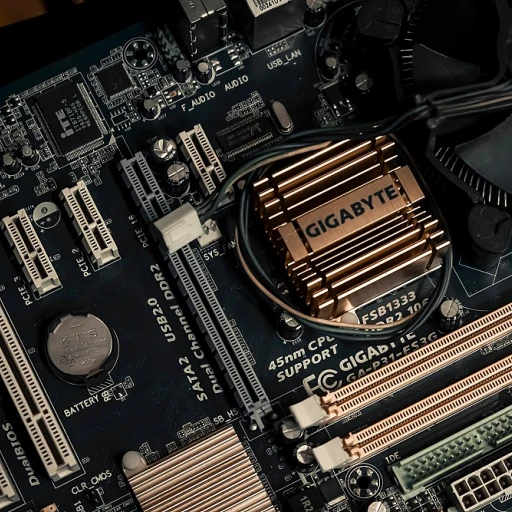Understanding Predictive Maintenance Tools
Deciphering Predictive Maintenance Tools
Predictive maintenance tools are nothing short of a game-changer for businesses, big or small. They take traditional maintenance routines to a whole new level by using predictive analytics and real-time data to avoid unplanned downtime and boost asset performance. Imagine cutting down on unexpected machine failures and extended service times - that's what predictive maintenance tools offer. These tools utilize software platforms like CMMS (Computerized Maintenance Management System) and blend in IoT technology, allowing them to monitor equipment condition continuously. Picture your machinery 'talking' back to you, giving real-time updates on its health and performance. It's like having a crystal ball for your assets. The beauty lies in the data analytics capabilities of these tools. By evaluating historical and live data, they're able to forecast when a piece of equipment is likely to require maintenance, rather than waiting for it to fail. This shift from a reactive maintenance model to a predictive approach is making waves in industries such as manufacturing and energy, where efficiency is king. Maintenance management is pushed to the forefront, and work orders become precisely targeted, ensuring that time and resources are allocated effectively. With machine learning capabilities integrated, these maintenance software solutions get smarter with each operation, refining their predictions over time. Predictive maintenance tools are not just about averting disasters. By leveraging condition monitoring and predictive analytics, businesses enhance their overall equipment effectiveness. They help maintain optimal machine performance, extending their lifespan while minimizing maintenance costs. Companies such as IBM Maximo are leading the charge in this domain, showcasing how embracing technology can revolutionize maintenance strategies. For those intrigued by how ethical considerations play a role in this evolving software scenario, check out our article on ethical AI in tomorrow's software. It offers insights into how such transformative technologies integrate with a moral compass, making sure that as we innovate, we also do so responsibly.Key Technologies Driving Predictive Maintenance
Driving Forces Behind Predictive Maintenance
Predictive maintenance tools are making a solid case for transforming how industries manage their assets, and that's mostly down to some impressive tech powering it. We're talking about advancements in machine learning, IoT, and predictive analytics — all contributing to smarter maintenance. Here's a quick rundown of what’s happening:- Machine Learning: This nifty tech helps make sense of massive amounts of data from equipment and assets. By identifying patterns and predicting failures, machine learning helps reduce downtime and extend the life of machines.
- Internet of Things (IoT): IoT sensors keep a vigilant eye on conditions like temperature, vibration, and performance. Imagine the machines themselves playing tattletale so engineers catch potential issues before they escalate!
- Predictive Analytics: This involves diving into historical and real-time data analytics to foresee problems and streamline maintenance operations. It’s the brain behind the predictions, helping convert insight into timely action.
Benefiting Industries
Industries across the board are latching onto predictive maintenance software, and with good reason — it's changing the game. Here’s a glimpse into sectors getting a real bang for their buck:- Manufacturing: Reduced downtime and efficient work order management are the big bonuses. Manufacturers love wringing every bit of life out of their equipment!
- Oil and Gas: In an industry where safety tops the chart, condition-based maintenance strategies using data analytics are helping drastically reduce unplanned downtime.
- Automotive: With vast supply chains and complex machinery, predictive analytics provides seamless asset management, enhancing performance while minimizing interruptions.
Challenges on the Road
Let’s face it — implementing predictive maintenance software can trip you up if you're not careful. While ripe with potential, a few things make it a hot potato:- Data Management: Handling and processing large volumes of data can be overwhelming. Companies must refine ways to manage and analyze data analytics effectively.
- Integrating Legacy Systems: Older setups and new tech don't always play nice together. Ensuring seamless integration into existing maintenance management systems, like CMMS software, is often a hurdle.
- Cost: Implementing and running such advanced maintenance tools requires investment, which can be substantial. Companies need to weigh the service benefits against the initial hit on their wallet.
Industries Benefiting from Predictive Maintenance
Profiting from Predictive Maintenance
When it comes to keeping machinery and equipment in top shape, predictive maintenance is the go-to option for many industries. Instead of waiting for machines to break down, companies can now prevent issues before they even happen. This kind of proactive work not only saves time but also cuts down on unexpected downtime and repair costs. Let's see who benefits most from these smart tools. First up are the manufacturing giants. These folks have massive production lines with thousands of moving parts, so keeping everything running smoothly is a must. With predictive analytics, they can monitor equipment performance, catch early signs of wear and tear, and issue work orders for repairs before machines grind to a halt. It's about maximizing uptime and ensuring asset performance is tip-top. Next, the transportation sector is all in on using predictive maintenance software. Think about it—planes, trains, and automobiles all have some serious equipment under the hood. Monitoring conditions in real time helps avoid unplanned downtime that could seriously disrupt schedules. Predictive maintenance tools work like magic, helping with everything from engine checks to ensuring safety protocols are met. Then there's oil and gas, where equipment failure can mean not just lost revenue but disastrous environmental impacts. By using predictive tools for condition monitoring, companies ensure that assets like drills and pumps keep operating effectively, minimizing any risk of spills or accidents. Plus, with IoT advancements, the collected data becomes even more insightful, paving the way to safer operations. The energy sector is also on board, using predictive maintenance to manage everything from power grids to renewable energy equipment. By analyzing data through sophisticated software, performance issues are identified before they escalate, helping to maintain a stable and efficient energy flow. Healthcare facilities, too, are reaping the benefits. Compact yet powerful, their machines provide essential services, and keeping these devices running without a hitch is crucial for patient care. Predictive maintenance simplifies the oversight of complex equipment, enhancing service delivery. Finally, facilities management sees a bump in efficiency when adopting predictive maintenance practices. Whether it's HVAC systems, elevators, or security setups, these maintenance tools allow for better resource management and ensure everything's working properly, decreasing unplanned downtime and improving service. Wherever predictive maintenance is applied, companies enjoy efficiency and financial upside, making it a wise choice across the board. For more on how innovative software like predictive analytics is shifting the game for industries, check out innovative software transforming smart cities.Challenges in Implementing Predictive Maintenance Software
Overcoming Barriers in Predictive Maintenance Software
Predictive maintenance software is a game-changer for many industries, but it doesn't come without its hurdles. Let's explore some common challenges faced when implementing these tools and how businesses can tackle them effectively.
Data Overload and Management
One of the primary challenges is managing the sheer volume of data generated by IoT devices and sensors. This data is crucial for predictive analytics, but without proper management, it can become overwhelming. Companies often struggle to filter out noise and focus on actionable insights. Investing in advanced data analytics platforms and training personnel to interpret data can help streamline this process.
Integration with Existing Systems
Integrating predictive maintenance tools with existing systems like CMMS or asset management software can be tricky. Compatibility issues may arise, leading to data silos and inefficiencies. To overcome this, businesses should prioritize solutions that offer seamless integration capabilities and work closely with vendors to ensure smooth implementation.
High Initial Costs
The initial investment in predictive maintenance software can be significant, especially for small to medium enterprises. However, the long-term benefits, such as reduced unplanned downtime and improved asset performance, often outweigh the costs. Companies can explore flexible pricing models or phased implementation to manage expenses better.
Skill Gaps and Training
Adopting new technology requires skilled personnel who can operate and maintain these systems. Many organizations face a skills gap, which can hinder the effective use of predictive maintenance tools. Providing comprehensive training programs and hiring experienced professionals can mitigate this issue, ensuring that staff are well-equipped to handle the technology.
Data Security Concerns
With the increased reliance on connected devices and cloud-based solutions, data security becomes a pressing concern. Protecting sensitive information from breaches is paramount. Implementing robust cybersecurity measures and regularly updating systems can help safeguard data and build trust with stakeholders.
Despite these challenges, the benefits of predictive maintenance software are undeniable. By addressing these hurdles head-on, businesses can unlock the full potential of their equipment and improve overall performance.











